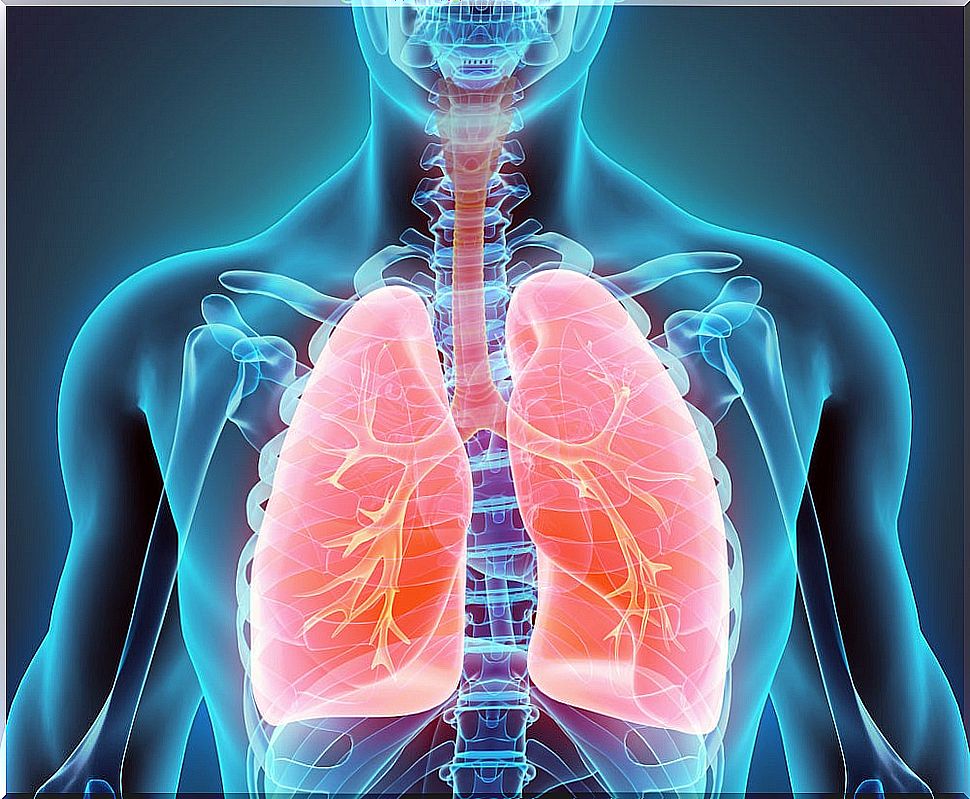Anthracosis: The Disease Of Coal Miners
Anthracosis is a lung condition that results from prolonged exposure to and inhalation of high carbon dust. This disease is also known as coal miner pneumoconiosis or black lung disease. This is because the condition has a high prevalence among people dedicated to mining.
Coal is a black mineral that contains mainly carbon. It contains other elements such as: sulfur, oxygen, nitrogen or hydrogen. It is used as a fossil fuel due to its calorific value and its high percentage of volatile elements.
Risk groups

Mainly made up of workers belonging to the carbochemical industry and various industries.
- Miners.
- Coal cutters.
- Graphite manufacturers.
- Carbon electrode manufacturers.
Anthracosis physiology
The immune system kills dust particles that get into the lungs naturally. This function corresponds to macrophages, cells of the immune system that engulf (engulf) any undesirable external particle.
Alveolar macrophages engulf the dust particles that reach the end of the bronchi, the bronchioles. These represent the last branches of the bronchi, where gas exchange occurs.
Phagocytosed particles accumulate in the lung interstices around the bronchioles. Over time, they will give rise to the most visible symptom of anthracosis: charcoal stains. These will get larger as the time you are exposed to this type of dust increases.
In the most severe cases of anthracosis, the macules evolve into carbon nodules. This is due to the accumulation of collagen in the lung interstices (fibrosis). In addition, the walls of the bronchioles are progressively delimited. As a result, they become dilated, resulting in focused pulmonary emphysema, which, in turn, leads to decreased respiratory function.
Respiratory function

During inhalation, the alveoli fill with oxygen-rich air. These structures are surrounded by very fine blood capillaries whose tiny size is essential for oxygen to access the blood supply by diffusion.
In the same way, the blood that circulates through these capillaries presents high levels of carbon dioxide, which will also access the alveoli by diffusion to be eliminated with each exhalation.
Symptoms and treatment of anthracosis

Cells whose walls have been damaged will not regain their integrity. Therefore, the loss of respiratory function is progressive and chronic. These symptoms are also very common in regular smokers, who often develop COPD (chronic obstructive pulmonary disease), a condition whose pathophysiology is very similar to anthracosis.
On the other hand, it seems that anthracosis is related to a greater predisposition to suffer from rheumatoid arthritis, a chronic autoimmune disease that affects the joints and surrounding tissues causing inflammation and pain.
As a general rule, anthracosis does not usually cause symptoms. In fact, the pulmonary symptoms are caused by secondary conditions derived from the accumulation of carbon, but not due to it.
According to experts, these symptoms include:
- Focused pulmonary emphysemas.
- Appearance of certain types of cancer (in some cases, it is not a constant).
- On the other hand, in some patients, there may be a development of chronic cough, even when they are no longer exposed to this type of dust.
Treatment of anthracosis, in some cases, may include:
- Oxygen therapies.
- Pulmonary rehabilitation.
However, in most cases, the defects produced as a consequence of exposure are chronic, so treatment is usually limited to restricting individuals to new exposures, especially in the most severe cases.
It is considered important to adopt, as an additional measure, to keep the patient in a clean environment or, in other words, with the least possible contamination.









